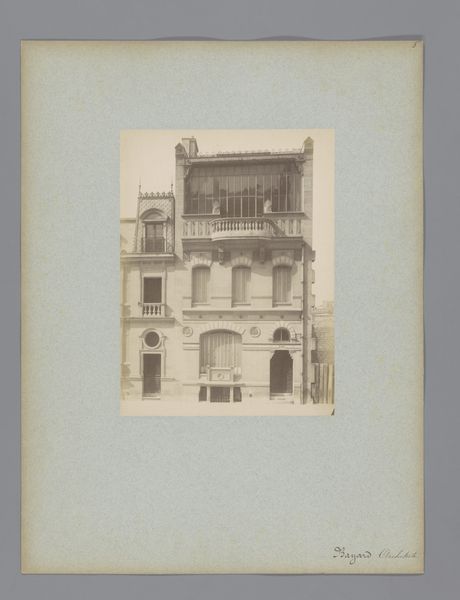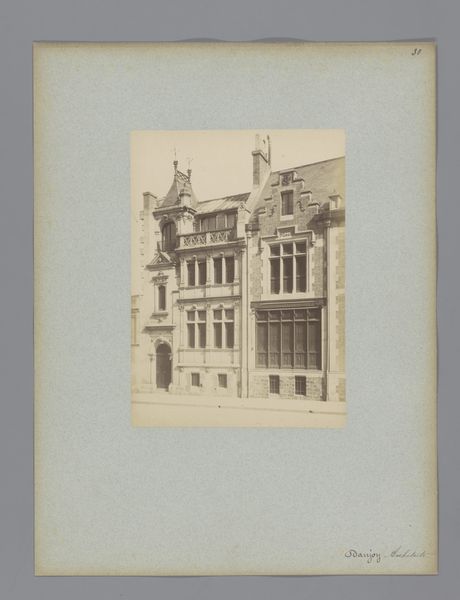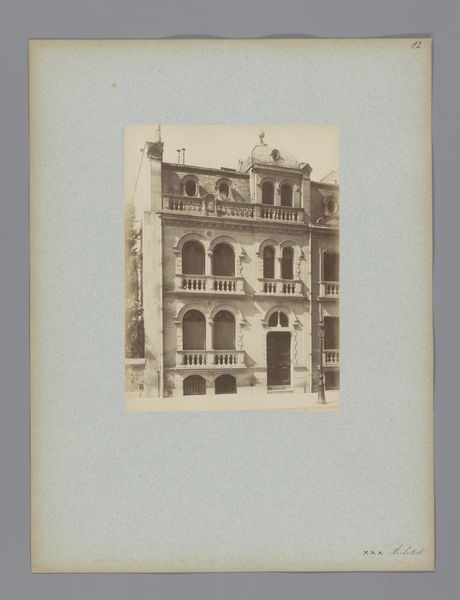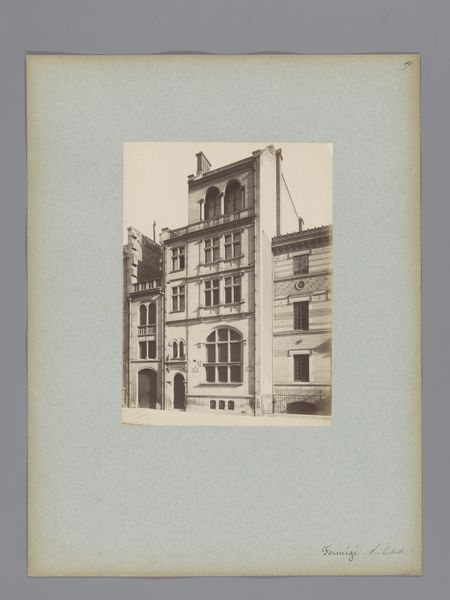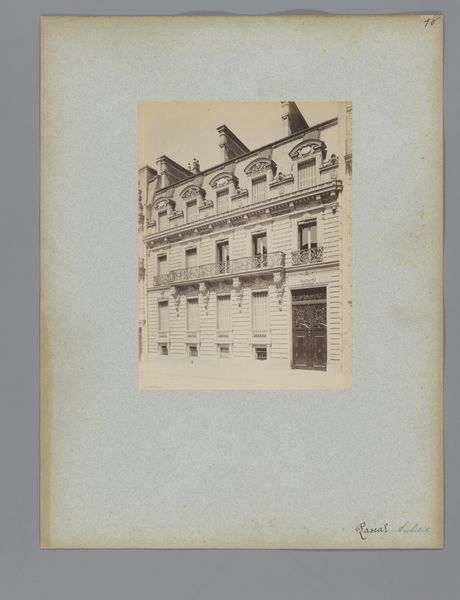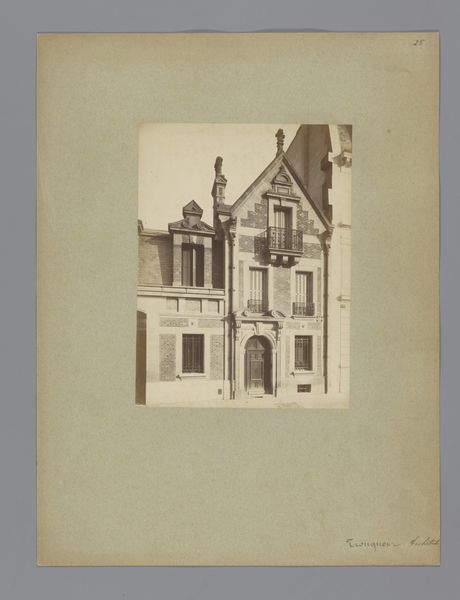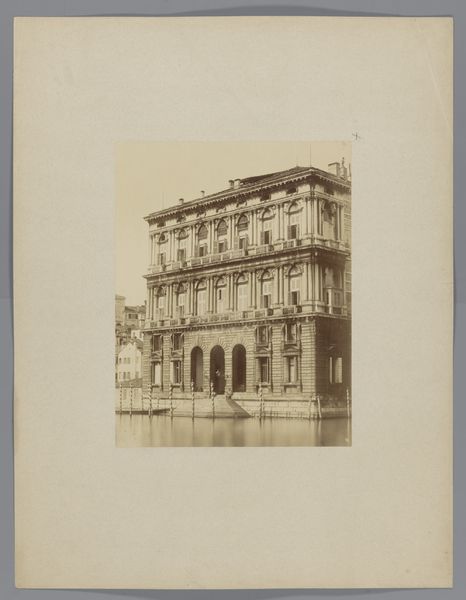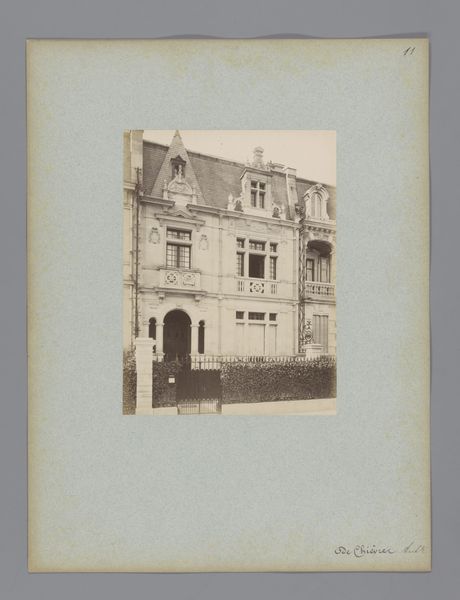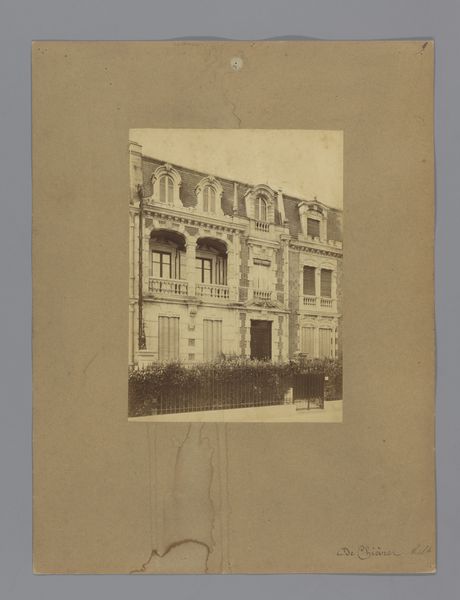
print, photography, gelatin-silver-print, architecture
# print
#
photography
#
gelatin-silver-print
#
cityscape
#
architecture
Dimensions: height 221 mm, width 165 mm
Copyright: Rijks Museum: Open Domain
Curator: This gelatin silver print, a photographic work from before 1880, captures a street view of a Parisian building by Lampué et Cie, titled "Hoek van een gebouw in Parijs"—"Corner of a building in Paris." What are your first thoughts? Editor: An imposing edifice! It gives me a feeling of solid, almost suffocating permanence, but also of elegance. That corner angle, with the classical details... there is something reassuring in this rigid architecture. Curator: Absolutely, we see this type of Beaux-Arts architecture shaping the urban fabric of Paris in this era, representing both stability and wealth. The photograph becomes more than just an image, but evidence of a shift towards urban grandiosity. The street is seemingly empty but for that lone figure, almost lost at the base of the frame. Editor: And that figure, a pedestrian in a dark suit, is so crucial! They almost seem dwarfed by the scale of the building, highlighting the almost unyielding nature of those stone walls. There's a suggestion of mortality here, facing enduring, monumental architecture. Think of the long shadows in Plato’s Cave, for instance…the building, the absolute. Curator: Indeed. And consider how these images functioned. As photographic prints, they provided a means of documenting urban transformations in a rapidly changing city, intended to be disseminated amongst a growing population who wanted to keep abreast of the shifting socio-political sphere of late 19th century France. Editor: Did the public stop to question who commissioned these images, what that suggested? There’s a prevailing sense of hierarchy; of order that permeates all the structures. Look at how the windows are arranged… the layers suggesting layers of… well, class. Curator: The power dynamics were definitely encoded in such imagery, often acting as silent propaganda. The architecture represents bourgeois values but photography became democratized as a way to broadcast these beliefs widely. This is a study in the social ambition visualized in Parisian stone. Editor: It’s as though the very air has been set in aspic… frozen, preserved for future scrutiny. It almost creates a melancholic longing, a nostalgic reach towards past glories…even then. Curator: An interesting contrast—the promise of modern photography to freeze the instant and simultaneously point towards a seemingly unshakable past. Editor: I find this quite affecting… those rigid lines are saying much about human fragility, endurance, and a subtle melancholy. Curator: And for me, it highlights the public role of architecture, as filtered through a lens of social and historical evolution. A true reflection, so to speak, of its era.
Comments
No comments
Be the first to comment and join the conversation on the ultimate creative platform.
